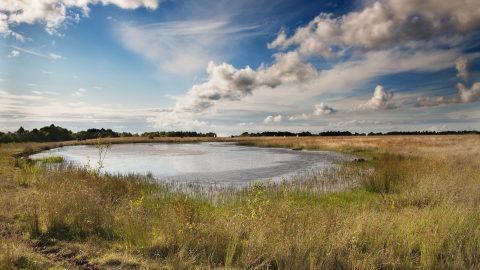
Leycett Meadows
Location
Know before you go
Dogs
Please keep dogs close to you, preferably on a lead, especially between April and July when many birds are nesting on or close to the ground.
When to visit
Opening times
Open at all timesBest time to visit
April to AugustAbout the reserve
Highlights
- A spring visit is the best time to hear the unmistakable song of the skylark.
- Look out for dragonflies and damselflies during the summer months too.
Reclaimed by wildlife
Since mining activities stopped the reserve has become a haven for a wide range of species. Perhaps most notable for its population of skylarks, their song is unmistakable during spring and summer. Other birds are beginning to use the site too and lapwings have begun breeding in small numbers. The young trees and scrub provide homes and song perches for small birds such as chiffchaff, willow warbler, blackcap and wren.
Delightful dragonflies
The small pools and wet, marshy areas provide homes for insects and amphibians. With the absence of fish in many of the pools there are relatively few predators of the diverse aquatic insects and their larvae, which are able to thrive in large numbers. Over 13 species of dragonfly have been recorded to date and if you sit quietly on a warm sunny day and you may find yourself becoming a temporary perch for foraging dragonflies! One pool supports a colony of newts, including great crested newts which are an important species and are protected by law.
Creating a Nature Recovery Network
Nature conservation needs to go beyond our nature reserves, which is why we also focus our efforts on working with landowners, including farmers and local authorities, to improve the wider landscape to make it better for wildlife. Find out more about our various projects here



